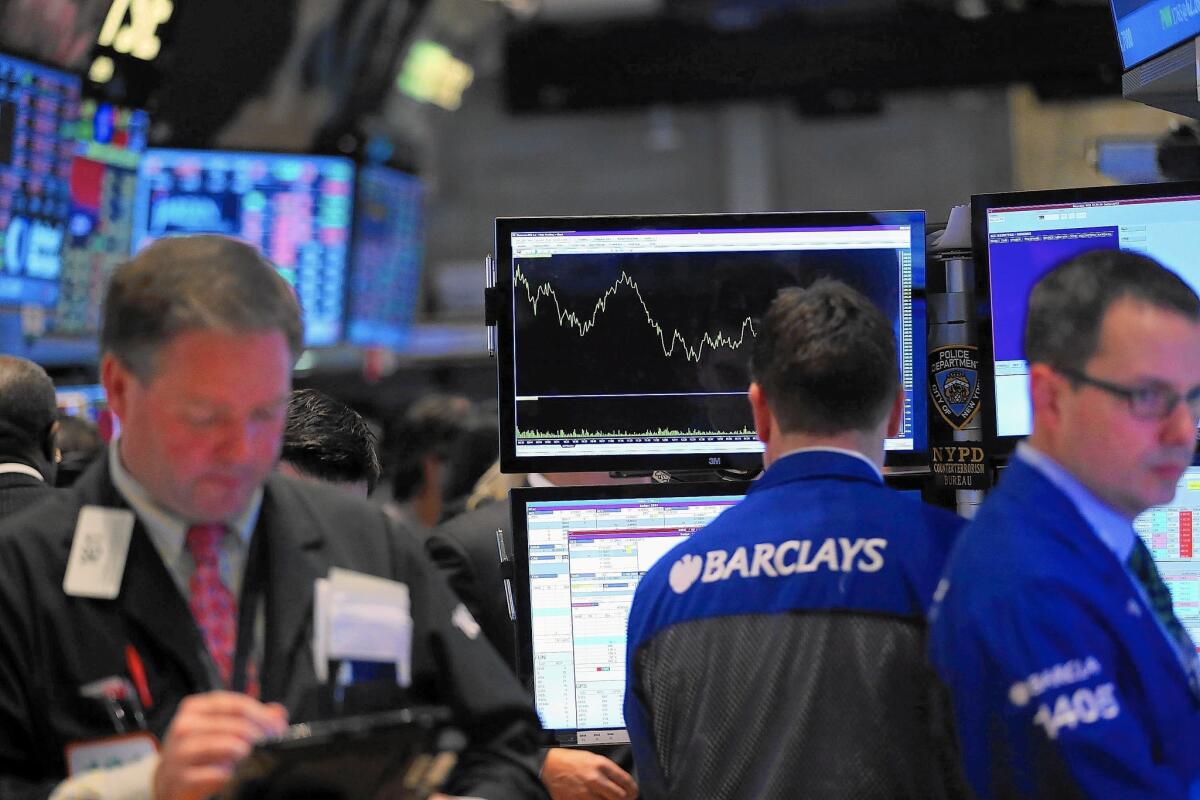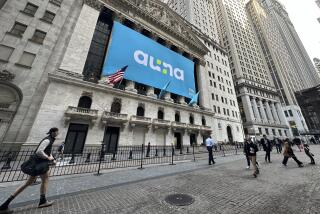Investors rattled as U.S. dollar rises against euro and yen

A day after marking its sixth anniversary with a big gain, the bull market stumbled.
A sharp increase in the dollar’s strength and lingering concerns about an interest-rate hike sparked a sell-off Tuesday that wiped out the major indexes’ gains for the year.
Analysts said both the extent and the rapid pace of the dollar’s recent rise rattled investors who feared that the dampening effect of a stronger greenback on American exports would interfere with the U.S. recovery.
At the same time, and maybe a bit paradoxically, investors remained concerned that the economy, despite the dollar, is becoming so strong that the Federal Reserve soon will be compelled to raise rock-bottom interest rates to head off inflation.
“It’s sort of a vicious circle,” said Bruce Simon, chief investment officer at City National Rochdale. “We’ve got the stronger economy in the U.S., especially relative to the rest of the world, leading to concerns about the Fed raising rates.”
The Dow Jones industrial average fell 332.78 points, or 1.9%, to 17,662.94, and the broader Standard & Poor’s 500 dropped 35.27 points, or 1.7%, to 2,044.16.
The losses, the biggest for both indexes since October, gave back the small gains the indexes had managed to eke out this year — at times, enough to set record highs.
Tuesday’s trading left the blue chips off 0.9% for the year and the S&P off 0.7%.
The proximate cause for the dip, analysts said, was the dollar. It rose about 1.4% against the faltering euro, which this week came under greater downward pressure as the European Central Bank launched an extensive version of a U.S.-style bond-buying program and flooded global markets with euros.
The dollar also rose against the Japanese yen, Swiss franc and other currencies.
The stronger dollar hurts sales abroad of U.S. exports, which make up about 13% of the nation’s total economic output.
A strong dollar, along with a weak Eurozone, is acting as a head wind against U.S. exports, though falling oil prices are providing a tail wind, Jason Furman, chairman of the White House Council of Economic Advisors, said in a speech Tuesday before the National Assn. of Business Economics.
On Monday, major indexes celebrated the sixth anniversary of the bull market, which began March 9, 2009. That was when the country was in the depths of the Great Recession, exacerbated by a severe financial crisis.
Although the market remains relatively expensive by historic measures — the S&P is still up 202% through Tuesday from the 2009 bottom — analysts said the strength of the economy should be enough to propel earnings for a while longer.
In a note Tuesday, Deutsche Bank analysts David Bianco and Ju Wang wrote that the market’s forward-looking price-to-earnings ratio — a key measure of stock value — is about 10% to 15% higher than historic norms, a level they said was sustainable with the potential for modest growth.
And that, they said, assumes the Fed doesn’t raise interest rates too high or too quickly. The forward P/E ratio is the cost of a share divided by expected annual corporate earnings per share.
Still, the prospect of rising interest rates has the markets jittery. The Deutsche Bank analysts said the likelihood of a Fed move poses a risk of a stock market pullback of 5% to 9% in the near term.
Analysts said a rising dollar might provide a reason for the Fed to delay a rate hike because a strong currency tends to keep inflation in check by making imports cheaper. But for now, the market seems resigned to a hike coming as early as June.
“Interest rates are the gorilla in the room,” said A.C. Moore, chief investment strategist for Dunvegan Associates Inc. in Santa Barbara. He cited an adage: “Tell what interest rates are going to do, and I’ll tell you what the market is going to do.”







